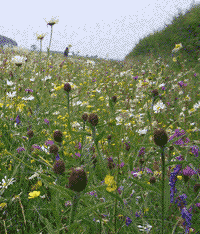Simple measures best to meet environmental targets

Farmers only need to use simple measures to meet government targets on biodiversity, according to a leading scientist.
Jim Orson, research and technical director of the Arable Group, said taking a simple approach to sowing covers could make a “real impact” in attracting birds and other wildlife.
The advice comes as farmers are being asked to join the Campaign for the Farmed Environment, a government-backed campaign led by DEFRA to help farmers protect and enhance the environment.
Launched last month, the campaign aims to retain the environmental benefits previously provided by set-aside in three key areas – resource protection, farmland birds and farm wildlife.
Speaking at a HGCA conference in Northampton on Tuesday (8 December), Mr Orson recommended two main covers that should be sown.
He said grassland mixed with wild flowers worked especially well in awkward corners of plots that were difficult to reach with machinery.
And mixtures of winter bird cover, such as triticale, winter vetch and fodder radish worked well if sowed around the edge of fields, he added.
“Every farm can produce a difference. A simple approach is all that is required,” said Mr Orson.
But he warned farmers against becoming “biodiversity-crazed”. Other objectives, such as water protection, also needed to be met, he said.
Mr Orson said the project results had been used by the Campaign for the Farmed Environment leaders to help formulate its recommendations.
A total of 16 ‘treated’ farms each of 100ha, had sown covers during the project, with the results compared with eight ‘untreated’ farms and four organic farms. Using the example of a 100ha farm, Mr Orson said farmers need to devote 2ha of uncropped land to see an improvement in biodiversity.

